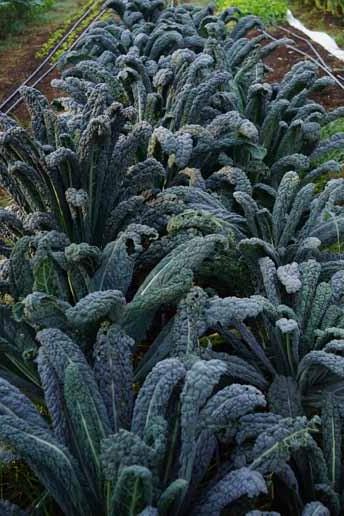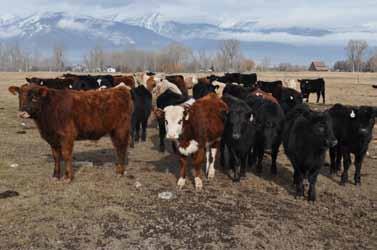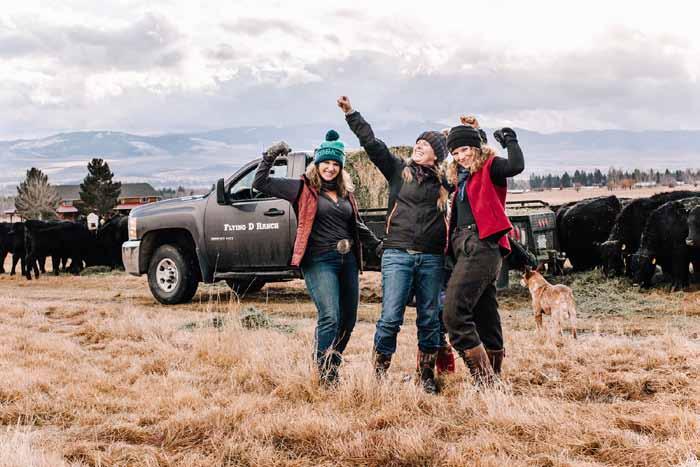
3 minute read
No-till practices
Agriculture Magazine, September 2020 - Page 11
photo cou tesy @ e n_co.mt
Advertisement
Nestled on 10 acres below St. Mary Peak in Stevensville, Fern Co. has adopted no-till practices primarily to increase its soil fertility. 3 years ago, their soil was an acidic sandy loam with relatively low organic matter. Utilizing regenerative practices, Fern Co. has increased soil organic matter by 40% in only 3 years, thereby improving soil water retention.
No-till practices increase soil fertility
JAMES HAY WARD Fern-Co Farm
Carbon, the building block of life, is stored in our soil in the form of Soil Organic Carbon (SOC) through chemical processes and microbial life.
A growing body of research has consistently shown that the tilling of our soils, especially deep tillage, release large quantities of carbon in the form of carbon dioxide. The USA has been losing about 1% of its topsoil per year, a rate that is 10 times higher than we replenish. Conservative estimates show that we have about 60 years left before we lose virtually all our topsoil in our nation unless agricultural practices are adjusted.
No-till regenerative agriculture isn’t a new idea, and has been growing in popularity around the world as people become aware of the benefit these practices have on their land. Nestled on 10 acres below St. Mary Peak in Stevensville, Fern Co. has adopted no-till practices primarily to increase its soil fertility. Three years ago, their soil was an acidic sandy loam with relatively low organic matter. Utilizing regenerative practices, Fern Co. has increased soil organic matter by 40% in only three years, thereby improving soil water retention. This sets the farm up to become
Page 12 - Agriculture Magazine, September 2020
resilient through future droughts.
A well-balanced and fertile soil is at the core of Fern Co.’s productivity.
“We look at our soil as our living savings account,” said Fern Co owner Jay Hayward. “Each year, we pull out thousands of pounds of nutrient-dense vegetables from our fields, and although these vegetables are made up of mostly water, this is still a large volume of nutrients that are now gone from our fields. If we don’t replenish at least this volume back into our fields each year, our soil would become less fertile and unbalanced. Unlike conventional farming practices that use fossilfuel derived fertilizers, regenerative farming allows us to build topsoil without disturbing its sensitive ecology. When we dig a few inches down into our field rows, we find a living soil teeming with insects and mycorrhizal fungi. This subsurface ecosystem creates symbiotic relationships with our crops and reduces pest and disease pressure, among other benefits.”
Fern Co.’s long-term vision is to become a major supplier of nutrient-dense foods throughout the Pacific Northwest. Their aim is to have dozens of acres of intensive field crop production as well as develop large scale rota- tional grazing practices of livestock. Our farm- lands should not be a burden to the health and longevity of our communities, they need to be places of regeneration, fertility and edu- cation for many generations to come.
Currently, you can find Fern Co.’s produce in a number of grocery stores throughout Ravalli County and each Saturday morning at the Hamilton Farmers Market. To meet the demand of this season’s CSA share, the company will be doubling field production to provide more shares to our community for the 2021 growing season.
To learn more about Fern Co. or to have any questions answered, please visit our website, www.fern-co.com or email us at info@fern-co. com.
photo cou

tesy @ e n_co.mt










